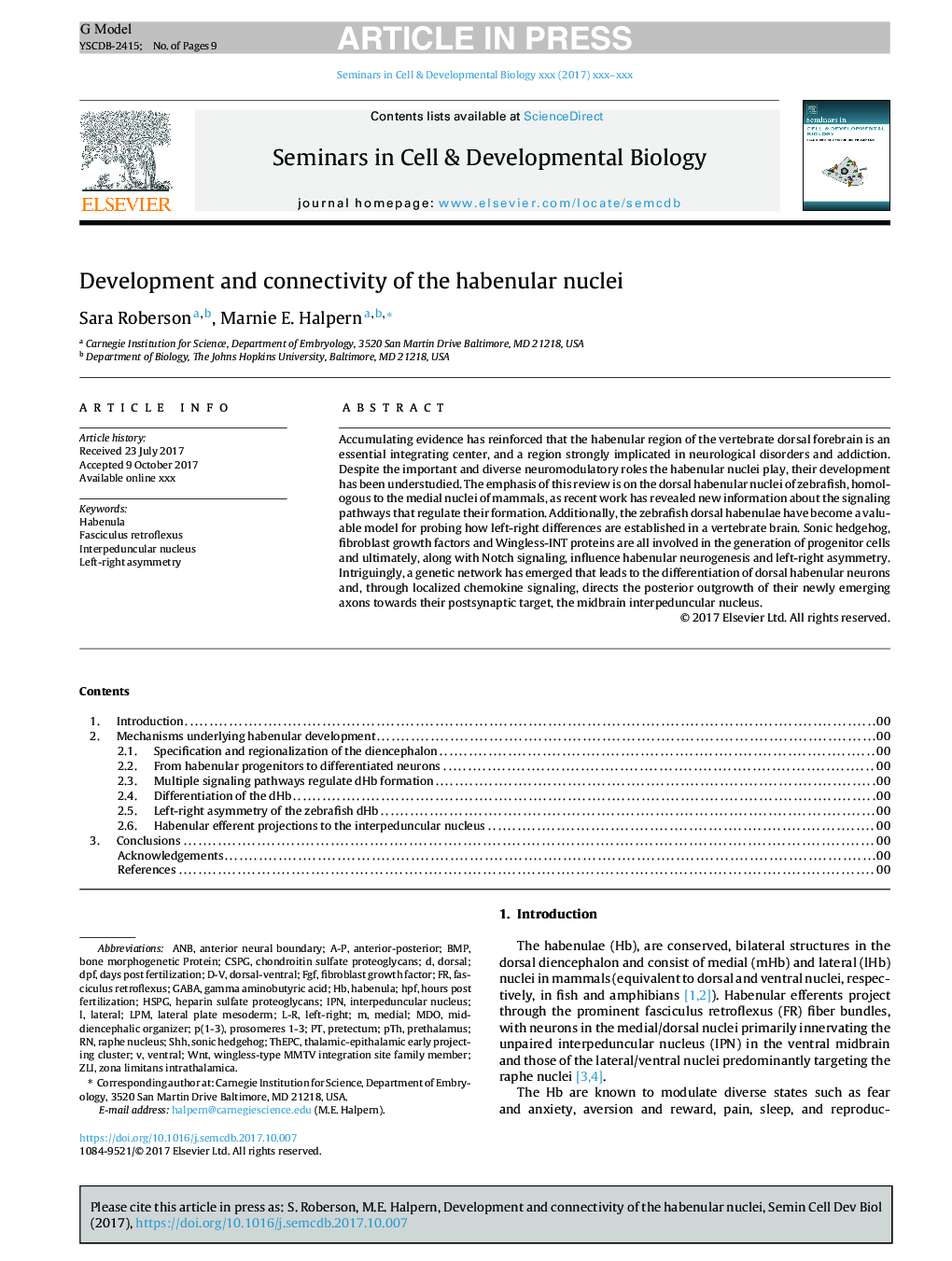| Article ID | Journal | Published Year | Pages | File Type |
|---|---|---|---|---|
| 8479657 | Seminars in Cell & Developmental Biology | 2018 | 9 Pages |
Abstract
Accumulating evidence has reinforced that the habenular region of the vertebrate dorsal forebrain is an essential integrating center, and a region strongly implicated in neurological disorders and addiction. Despite the important and diverse neuromodulatory roles the habenular nuclei play, their development has been understudied. The emphasis of this review is on the dorsal habenular nuclei of zebrafish, homologous to the medial nuclei of mammals, as recent work has revealed new information about the signaling pathways that regulate their formation. Additionally, the zebrafish dorsal habenulae have become a valuable model for probing how left-right differences are established in a vertebrate brain. Sonic hedgehog, fibroblast growth factors and Wingless-INT proteins are all involved in the generation of progenitor cells and ultimately, along with Notch signaling, influence habenular neurogenesis and left-right asymmetry. Intriguingly, a genetic network has emerged that leads to the differentiation of dorsal habenular neurons and, through localized chemokine signaling, directs the posterior outgrowth of their newly emerging axons towards their postsynaptic target, the midbrain interpeduncular nucleus.
Keywords
DPFANBPretectumD-VA-PHSPGMDOpTHIPNWntmedialCSPGFasciculus retroflexusFGFLPMhpfHabenulaGamma aminobutyric aciddays post fertilizationlateralShhhours post fertilizationZlisonic hedgehogLeft-right asymmetrydorsal fibroblast growth factorBMPLateral plate mesodermzona limitans intrathalamicainterpeduncular nucleusRaphe nucleusheparin sulfate proteoglycansventralPrethalamusBone morphogenetic proteinChondroitin sulfate proteoglycansDorsal-ventralAnterior-PosteriorLeft-rightGABA
Related Topics
Life Sciences
Biochemistry, Genetics and Molecular Biology
Cell Biology
Authors
Sara Roberson, Marnie E. Halpern,
